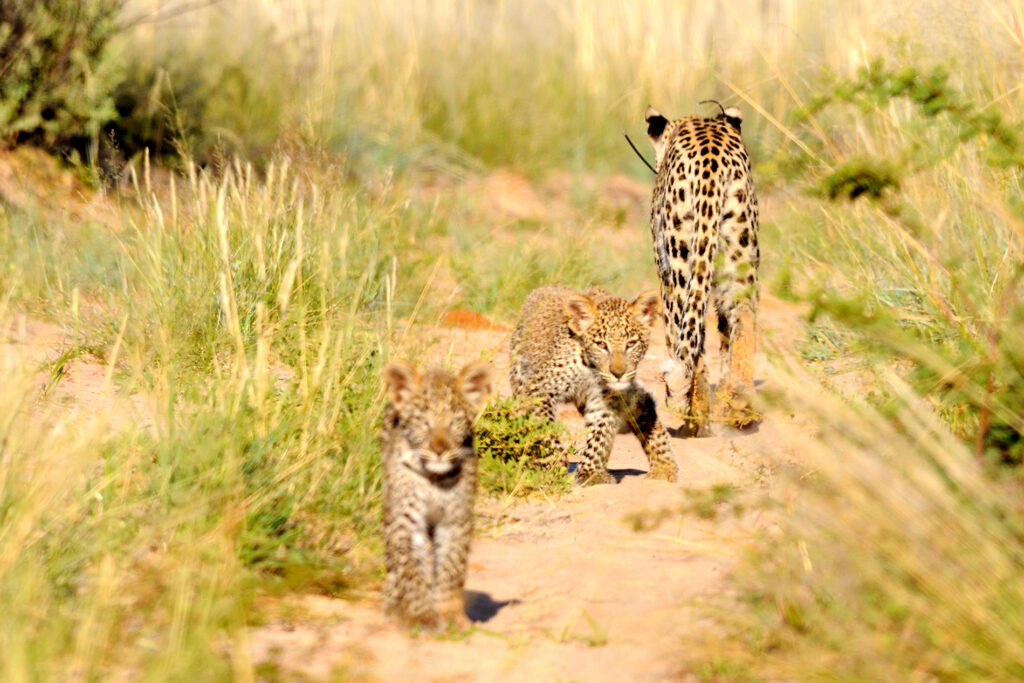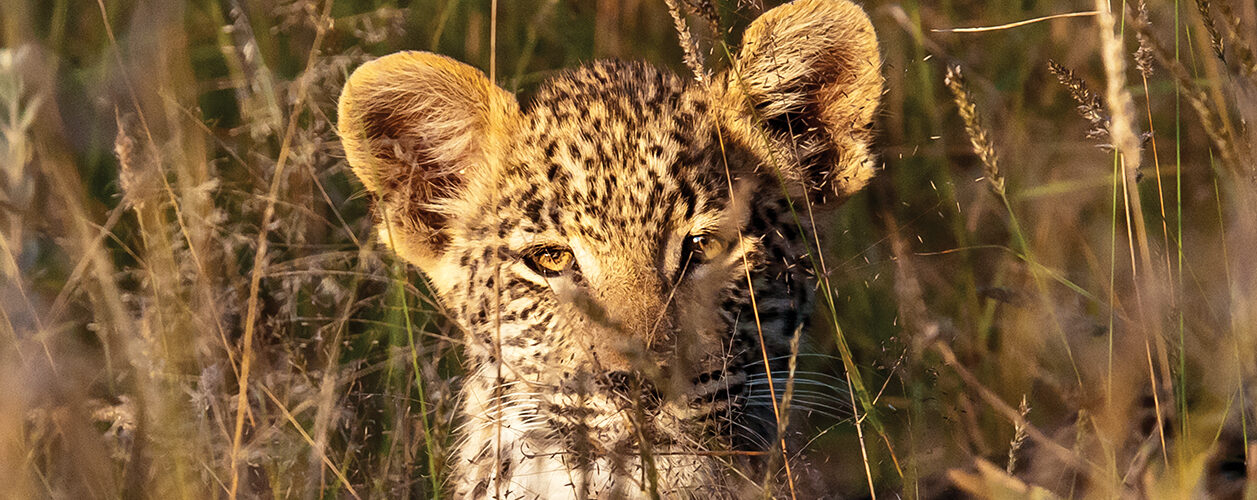Key Facts: Leopard
- Scientific name: Panthera pardus
- IUCN Red List threat category: Near Threatened
- Distribution: Historically, leopards were distributed throughout Africa and parts of Asia. Today, their range has been restricted to sub-Saharan Africa, with isolated populations in Asia and the Middle East. In Botswana, they occur in both protected and unprotected areas.
- Social system/Behaviour: Solitary, nocturnal, shy, highly adaptable with the ability to persist in close proximity to humans.
- Territory: from 18 km2 (in Kenya) to over 1000 km2 (Botswana)

Leopards in the Kalahari
Leopard Ecology & Conservation has been conducting research on leopards (Panthera pardus) in the central Kalahari since the year 2000.
Leopard Density
Compared to most other ecosystems leopard density in our study area is extremely low. This is as a result of the low productivity of the Kalahari ecosystem, which supports only low densities of herbivore species. Low leopard density brings with it concerns in terms of conservation status. Although the population currently appears to be stable, unpredictable environmental changes could easily lead to the deterioration of conditions which are vital for the persistence of the local leopard population. For this reason we investigate the basic ecological needs of the local leopards, as well any potential threats.
Food & Hunting Behaviour
A key resource is of course food, and consequently we study the prey utilization of leopards, along with the density at which these prey species occur, and the vegetation which supports these herbivores in return.
Vegetation, and the landscape, are influential factors during hunting, and we are interested in their role during this process. We also look at how leopards use the space available to them, and how they share this with competing species such as lions. All the above mentioned components interact with each other, and we hope that by understanding these dynamic relationships a bigger picture should emerge that will provide important insights for the conservation of leopards and all other species living in the Kalahari.
Conflict with famers
Leopards are faced by various threats in our study area, and as elsewhere, unfortunately these are mostly as a result of human influences. Leopards often come into conflict with farmers outside protected areas when they kill their livestock.
A commonly used method to resolve this, is to catch and translocate such “problem” leopards into protected areas. We are studying the effectiveness of this method, by placing collars on such translocated animals and monitoring their behaviour and fate following their release. At the same time we are educating local farmers how to better protect their livestock in order to reduce such conflict.
Diseases
Diseases pose an additional threat to the local predator populations. As a result of their wide ranging behaviour in the Kalahari, leopards may be exposed to various pathogens, often carried by domestic animals into the game reserves. For this reason, we investigate the disease and health status of the leopards that we study and its potential consequences at the population level.

